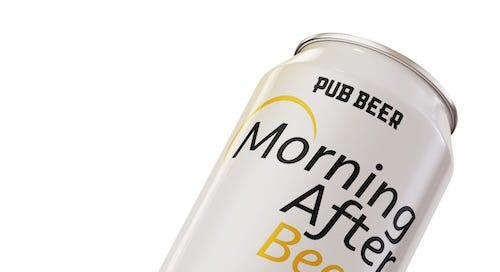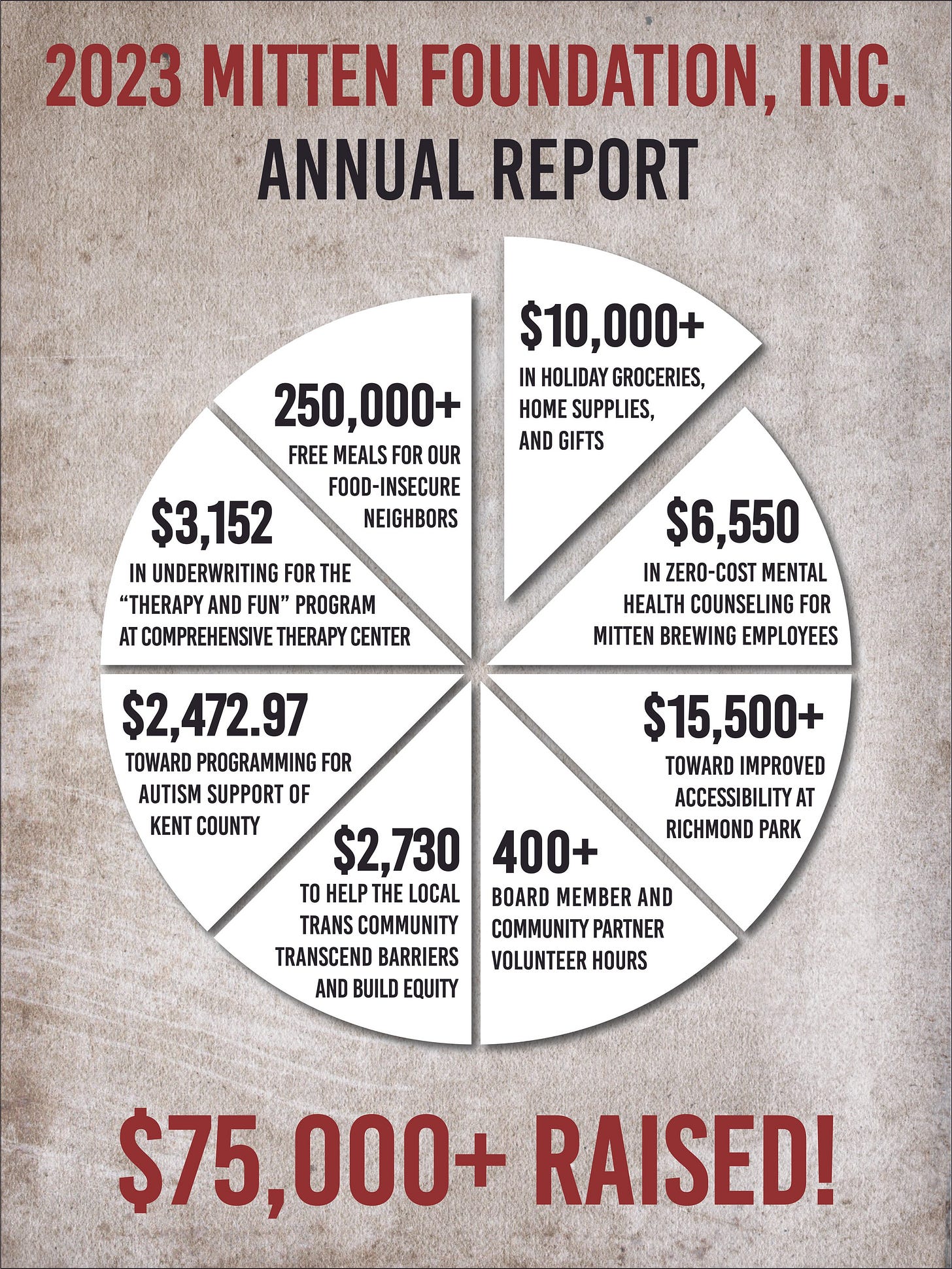This week, I got an interesting pitch from a relatively significant national brewery that got me thinking:
What are booze companies doing to weather Dry January? And more than Dry January, the entire sober(ish) movement happening as well?
The pitch was from 10 Barrel Brewing for its “Emergency Morning After Beer,” a limited-run Beermosa. It’s part of their “Wet January Movement,” and the idea of a counter-movement to Dry January is wild. They did send me a few samples, which I will I will crack into next weekend when we cross into February. (Editor’s Note: Aside from a few Malort swigs at Meatpocalypse last weekend, I’m holding to my sober pledge!)
As mentioned in previous weeks, it is more important than ever to check in and reevaluate relationships with alcohol, and participating in a wider movement like Dry January or Sober October is a great time to do that.
That said, mass participation certainly cannot be easy for companies that provide people with jobs and help local economies. Unsurprisingly, there have been more than a few desperate pleas from breweries on social media to keep drinking through January. Actually, for quite a long time at this point, I’ve been turned off by many of the (at times questionable) marketing strategies and general subculture of craft beer and how it, for lack of a better way of saying it, promotes alcoholism.
Anyway, I digress.
Plenty of amazing breweries still treat the industry as a responsible place to partake, give back to the community in incredible ways, and help push cities and neighborhoods forward. I still firmly believe that there are few better ways to really get the vibe of a city than to step into one of its better breweries and chat with a few regulars.
These places provide valuable third spaces that have rapidly disappeared from the American landscape. In a recent Bureau of Labor Statistics survey, daily socialization amongst adults 25-54 declined 20% between 2003 and 2023. (Note: That’s why I love things like my friend Raul’s “Bible Study” group that meets at City Built Brewing here in Grand Rapids. It’s just a group of professionals from around town that talks about what’s happening in the city or world. I’ve met some incredible people over the conversations!)
One of my favorites, Mitten Brewing Company in Grand Rapids, reminded me of how important it is to support these breweries. Since it opened in 2012, it has given more than $300,000 to local nonprofits and done so much more for its neighborhood and employees. Ownership is also fighting hard to help protect the Michigan restaurant industry as it fights for an increase in required wages.
Many of these companies are also restaurants, and places like the Mitten have incredible food options, so a quick stop-in for a to-go pizza could go a long way.
Other ways to help local breweries:
Gift cards: They may be for your future use, but they also make good gifts for a friend or family member who loves a good brew.
Many of these places have really cool merchandise too.
It could be as simple as engaging in their social media to help amplify the brands.
If they have a foundation like The Mitten or hold fundraisers, contribute to that to ensure it continues to serve the community entirely.
The Brewers Association, the national trade group for craft breweries, even started a “Pour Love Into Local” campaign to encourage visits that don’t revolve around alcoholic beverages. Even without the growth in Dry January participation, the winter months are the slowest months for these businesses.
“Breweries are more than just places to grab a pint—they’re hubs of creativity and community,” said Ann Obenchain, vice president of marketing and communications at the Brewers Association. “With ‘Pour Love into Local,’ we’re encouraging everyone to explore what their local brewery has to offer, whether it’s a warm space to gather with friends, a chance to try a new NA creation, or simply a way to support a small business during the slower winter months.”
Interesting reads of the week
“For the Drinks Industry, Tariffs Will Be Worse Than Expected” — InsideHook dives into the preliminary numbers of President Donald Trump’s proposed tariffs. A 10% tariff on imported wine and spirits would equal an estimated economic output loss of $1.9 billion. That’s the low end. In Trump’s first go around, he significantly damaged the Scotch industry.
On a more happy note, VinePair highlighted “15 Winemakers to Watch in 2025.”
Eric Asimov, the New York Times wine critic, dove into the growing trend of restaurants shrinking their wine lists. While some might not like the limited selections, it can help connect a restaurant with customers better.
And, somewhat related to today’s main topic: The Wall Street Journal reports, “The Alcohol Industry Is Hooked On Its Heaviest Drinkers.” The main takeaway: A fifth of adults account for 90% of alcohol sales volumes. And for many of those heavy drinkers, the growing warnings about health effects don’t appear to be making much of a difference.
What we’re drinking
I kept Dry January moving with bitters and soda, Heineken 0.0 and Guinness 0.0, which taste almost identical to their full-boozy brothers.
I also picked up a pack of Faygo Rock & Rye, a cream soda providing a blast from the past! And then on a visit to a local taco place, I grabbed a Grapefruit Jarritos.





